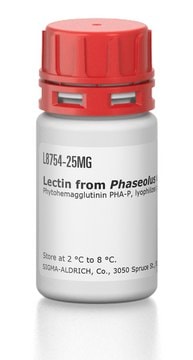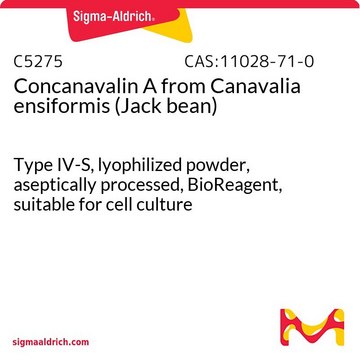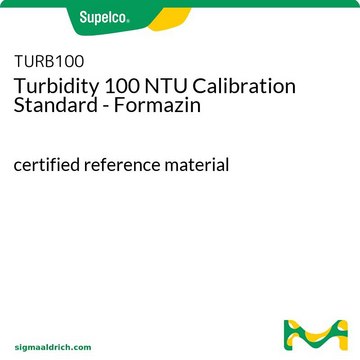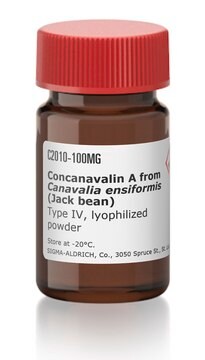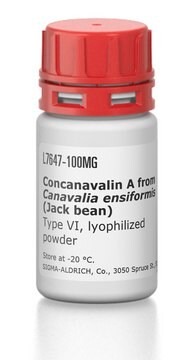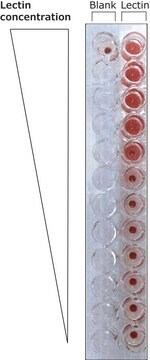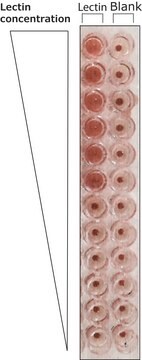L9379
Lectin from Phytolacca americana (pokeweed)
lyophilized powder
Sinónimos:
PWM, Pokeweed mitogen
About This Item
Productos recomendados
sterility
aseptically filled
Quality Level
form
lyophilized powder
potency
≤0.3 μg/mL mitogenic activity
storage temp.
2-8°C
¿Está buscando productos similares? Visita Guía de comparación de productos
General description
Application
- as a medium supplement for mononuclear cell incubation, to induce lymphocyte proliferation
- as a positive control in the study of the role of chemokine (C–C motif) ligand 2 (CCL2) in proliferation and apoptosis of decidual leukocytes
- as a supplement in the RPMI (Roswell park memorial institute) 1640 medium for peripheral blood lymphocyte cultures
Biochem/physiol Actions
Physical form
Essentially salt-free.
Analysis Note
signalword
Danger
hcodes
Hazard Classifications
Resp. Sens. 1 - Skin Sens. 1
Storage Class
11 - Combustible Solids
wgk_germany
WGK 3
flash_point_f
Not applicable
flash_point_c
Not applicable
ppe
dust mask type N95 (US), Eyeshields, Faceshields, Gloves
Certificados de análisis (COA)
Busque Certificados de análisis (COA) introduciendo el número de lote del producto. Los números de lote se encuentran en la etiqueta del producto después de las palabras «Lot» o «Batch»
¿Ya tiene este producto?
Encuentre la documentación para los productos que ha comprado recientemente en la Biblioteca de documentos.
Los clientes también vieron
Nuestro equipo de científicos tiene experiencia en todas las áreas de investigación: Ciencias de la vida, Ciencia de los materiales, Síntesis química, Cromatografía, Analítica y muchas otras.
Póngase en contacto con el Servicio técnico
